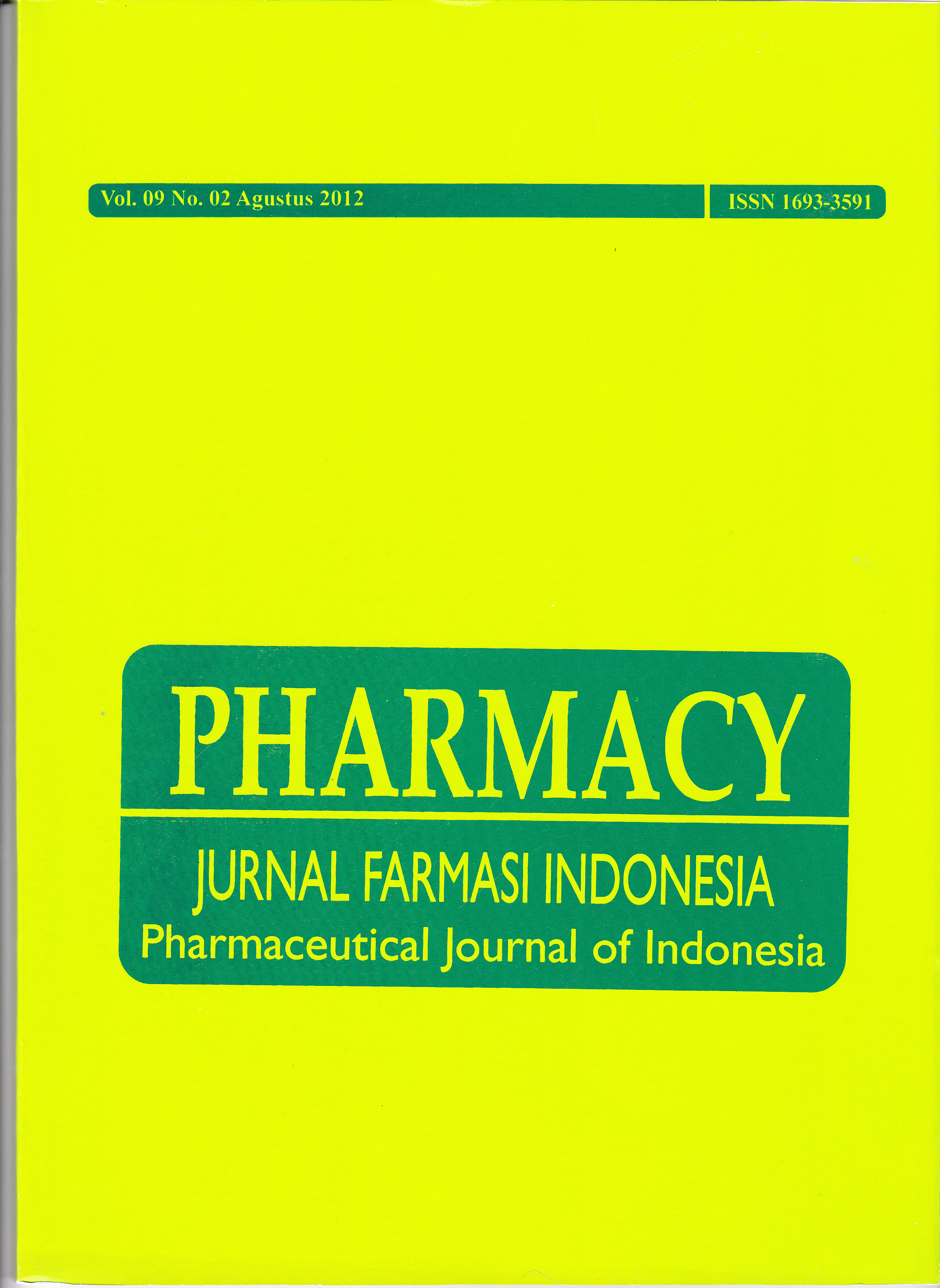INFEKSI SALURAN KEMIH DI INSTALASI RAWAT INAP RSUD BANYUMAS PERIODE AGUSTUS 2009 – JULI 2010
DOI:
https://doi.org/10.30595/pji.v9i2.694Abstract
ABSTRAK Infeksi Saluran kemih ( ISK ) adalah keadaan dimana saluran perkemihan terinfeksi oleh patogen yang menyebabkan inflamasi. ISK biasa ditemukan pada masa anak anak hingga manula. Pasien ISK bergejala menerima terapi antimikroba. Ada banyak jenis antibiotika dari bermacam macam golongan dalam pengobatan ISK. Penelitian ini dianalisis menggunakan metode retrospektif pada 115 pasien rawat inap RSUD Banyumas Periode Agustus 2009 – Juli 2010 dan dibandingkan dengan Pedoman Diagnosa dan Terapi RSUD Banyumas. Hasil menunjukan, penderita ISK adalah 12,17% pediatrik, 71,30% dewasa dan 16,52% Lansia. Sebanyak 74,78% pasien menunjukan positif bakteriuria dan 25,12% negatif. Terdapat 12 jenis antibiotika yang digunakan dalam 115 kasus. Antibiotika Ceftriakson sebesar 59,38% merupakan antibiotika yang banyak digunakan. Kata kunci: Antibiotika, Pasien, ISK, RSUD Banyumas ABSTRACT Urinary Tract Infection ( UTI ) is a condition in which the urinary tract is infected with a pathogen causing inflammation. UTI is commonly found on children to geriatric periods. Symptomatic UTI patient should receive an antimicrobial therapy. There is a lot of agents from many groups of antibiotic commonly used which are treat UTI. This research analized with retrospectif methods to 115 hospitalized patient at RSUD Banyumas in August 2009 – July 2010 and compared to Pedoman Diagnosa dan Terapi RSUD Banyumas. The result shows, UTI patient are 12,17% pediatric, 71,30% adult and 16,52% geriatric. In amount of 74,78% patient show positif bacteriuria and 25,12% negatif. There is twelve antibiotic agents are used by 115 cases. Ceftriaxone 59,38%, is poppular antibiotic. Keywords: Antibiotic, patient, UTI, RSUD Banyumas.References
Anonim. 2009. Pedoman Diagnosa dan Terapi RSUD Banyumas. Pemerintah Kabupaten Banyumas.
Arief MTQ.2008. Pengantar Metodologi Penelitian Untuk Ilmu Kesehatan. Surakarta: UNS press
Grabe M, Bishop M.C, Cek M, Lobel B, Naber KG, Palau J, Tenke P, Wagenlehner W. 2009. Guidelines on Urological Infection. European Association of Urology.
Hellerstein S. 2009. Urinary Tract Infection.
Howes DS. 2009.Urinary Tract Infection, Females. www. Emedicine.com
Nawawi H.1983.Metode Penelitian Bidang Social.UGM Press
Nguyen HTMD. Bacterial Infection of The Genitourinary Tract.p: 193-218. Dalam Brounwald E, Fauci AS, Kasper DL, Huser SL, Longo DL, Jameson JL.2003. Harison Principle of Internal Medicine 15th Edition. McGrawhill. USA
Raju SR, Tiwari SC. 2001. Urinary Tract Infection. Journal, Indian academy of clinical medicine Vol 2 no 4.
Tessy A, Ardaya, Suwanto. Infeksi Saluran Kemih. Dalam Suyono S. 2001. Buku Ajar Ilmu Penyakit Dalam Jilid 2 Edisi 3. FKUI. Jakarta
Tjay TH dan Raharja K. 2002. Obat Obat Penting. Gramedia.Jakarta
Well BG, Dipiro JT, Swinghammer TL, Hamilton CW.2006. Pharmacotherapy Handbook. McgrawHill. USA
Downloads
Published
How to Cite
Issue
Section
License
Authors who publish with this journal agree to the following terms:
- Authors retain copyright and grant the journal right of first publication with the work simultaneously licensed under a Creative Commons Attribution 4.0 International License that allows others to share the work with an acknowledgement of the work's authorship and initial publication in this journal.
- Authors are able to enter into separate, additional contractual arrangements for the non-exclusive distribution of the journal's published version of the work (e.g., post it to an institutional repository or publish it in a book), with an acknowledgement of its initial publication in this journal.
- Authors are permitted and encouraged to post their work online (e.g., in institutional repositories or on their website) prior to and during the submission process, as it can lead to productive exchanges, as well as earlier and greater citation of published work (See The Effect of Open Access).






